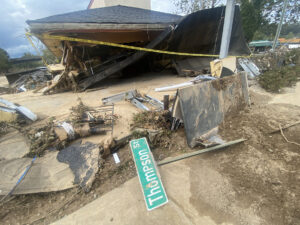5 crisis comms essentials
Follow this framework to calmly, confidently shepherd your colleagues through choppy skies.

The COVID-19 pandemic has revealed the value of simplicity, consistency and honesty in communications.
Leaders who applied these values seem to be more effective than those who rushed into action and produced contradictory rules, orders and messages.
If you run a business and find yourself in a major crisis, simplicity, consistency and honesty in communications will help you navigate through the situation and ensure you keep your employees and stakeholders on board. But what exactly should you do?
It is neither easy nor obvious at first glance. In search of guidance, let’s look at an industry which has over a century long experience in dealing with life-threatening emergencies: aviation. I am a private pilot and a communications professional with 20+ years of experience. I will draw from these backgrounds to suggest an approach to crisis communications very similar to the one developed in aviation. Here is a simple checklist for managing successful communication during an unexpected crisis.
Step 1: Prepare for predictable trouble.
While we can’t anticipate any and all crises that might arise, some are predictable. Preparation is by far the most important step. Advance preparation can be relatively easy, as it is typically developed during calm, quiet times. In aviation, preparation is achieved with thorough standardized training, documented procedures and checklists and by ensuring the necessary equipment is in place and is in good working condition. In communications, preparation boils down to basics:
- Purpose. Make sure people know what they work for (other than for paycheck). What is the higher purpose of the business? In my company, where I am responsible for communications in four European countries, this higher purpose is defined simply as driving the change for a cleaner world. Our company produces energy. And everyone in our company aligns with our vision of a cleaner world. What is the higher purpose of your organization? Does everybody know it?
- People. Do you have the right people responsible for communications? Who is in charge of this area? Are you managing this area as the CEO, do you have a trained communications manager, or an external expert? Do you have trained spokespersons? Do you have a crisis communications team who can swiftly and expertly manage all the logistics of an emergency?
- Procedures. Do you have written communications procedures that cover crisis communications? Are people trained in that area? Do they know their responsibilities? Do you have simple checklists for most likely scenarios? You need them, despite having experience and a great team. Highly-trained pilots in commercial aircraft need them, too, because in the middle of an emergency, people can forget obvious things.
- Communication channels. Are you set up with strong communications channels including intranet, secure e-mail, software for remote conferencing, and regular meetings with top management? A set of channels, suited for your organization and industry should be in place and people must routinely use them.
Step 2: Stay calm.
In aviation there is a saying: “When you have an emergency, the first thing you should do is wind your watch.” Very seldom will you need to rush to action immediately. Wait a bit, evaluate the situation, assess your options, and then act. The same applies to most communications crises: get the data, analyze it, do not rush with decisions and certainly do not rush with communication.
Step 3: Define priorities.
When things go wrong in the air, the first and most important thing is to fly the aircraft. No matter if you are on fire or your engine is dead – fly the aircraft.
The rule taught to all pilots reflects this: aviate, navigate, communicate. In this order, not the other way round. You need to define your priorities. It is easier if you have a predefined set of values. In my company, safety comes first. So, if we face a situation where people are in danger, we take care of them first. Communication can wait. Business can wait. People in danger have priority. What are your priorities?
Step 4: Ask for help.
No matter how skillful you are, you need your mental capacity to focus on priorities. When an emergency hits, call your crisis team and delegate tasks that are pre-defined in your procedures. Get your communication expert on board as they have the full picture of the business, know your priorities, can focus on drafting the messages and choosing the appropriate communications channels. They have a slightly different perspective than you, so they may spot items you overlooked. In aviation the pilot also asks for help. In an emergency all resources of air traffic control are at their disposal to help. The cabin crew or passengers may also enlisted for help. But it is still the pilot who needs to fly the plane. In a business crisis, you will need to deliver the critical key messages to employees, contractors and other stakeholders.
Step 5: Be brief, consistent and honest.
In an emergency, the pilot talks very little, but still conveys all the necessary information. The Air Traffic Control manuals remind controllers not to ask too many questions. During the emergency landing on the Hudson River, the controller gave Captain Sullenberger directions to return to the airport. Sully answered with one word: Unable. Be brief talking to your employees, contractors or customers in crisis. Less is more. Communicate only what you are sure about and resist speculating. If you are not sure about something, admit it. Also admit to a lack of all data. Acknowledge that some decisions may change later as new information surfaces. This builds trust: Be honest, answer questions and be there for your people –employees, your clients, vendors and journalists. They will appreciate it.
These five steps of successful communication will not guarantee that the crisis will not hurt you. But by applying them, you maximize your chances of survival. Just read the history of aviation accidents. A lot of very difficult situations ended well, because the pilots were well prepared, stayed calm, focused on flying the aircraft and received adequate help. Your crisis can also end well and, maybe even make you stronger.
Jacek Lawrecki is an international communication executive based in Poland. Follow him on LinkedIn and Twitter.






